Florida’s Top 10 Most Dangerous Venomous Snakes
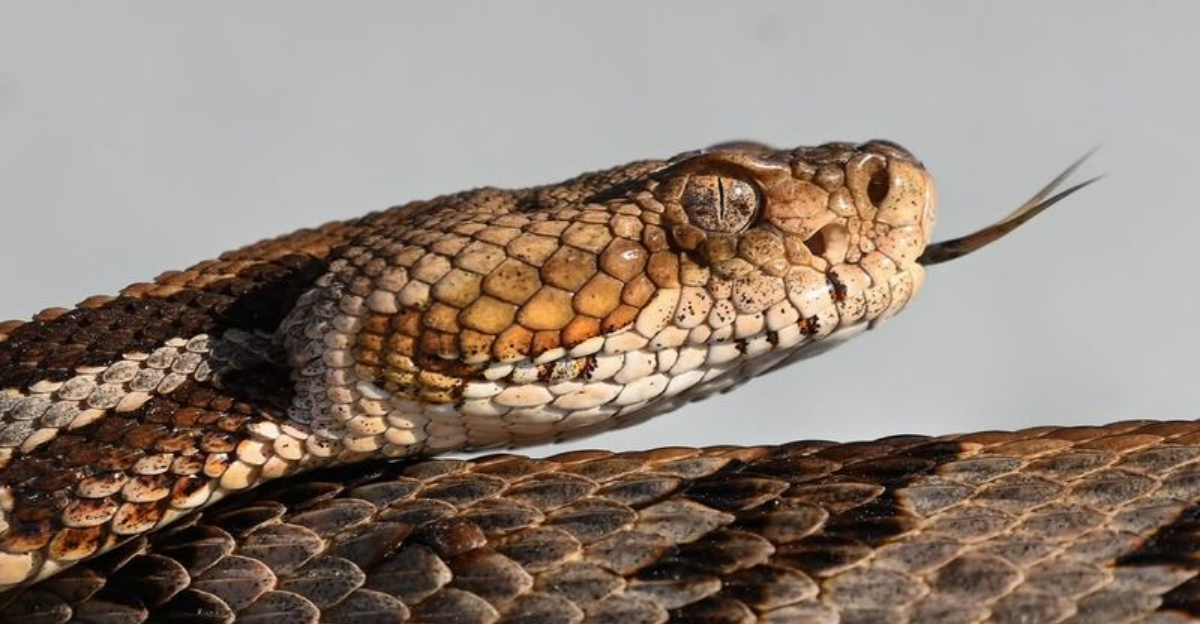
Beneath Florida’s sunny skies and sandy beaches lurk some of the most dangerous venomous snakes in the world. These slithering creatures are not only fascinating but also essential to Florida’s diverse ecosystem. While they play a crucial role in maintaining the balance of nature, encountering one can be a hair-raising experience.
This list uncovers the most venomous snakes in Florida, blending intriguing facts with a touch of humor to keep things lively. Whether you’re a snake enthusiast or just curious, read on to discover Florida’s most notorious serpentine residents.
1. Eastern Diamondback Rattlesnake
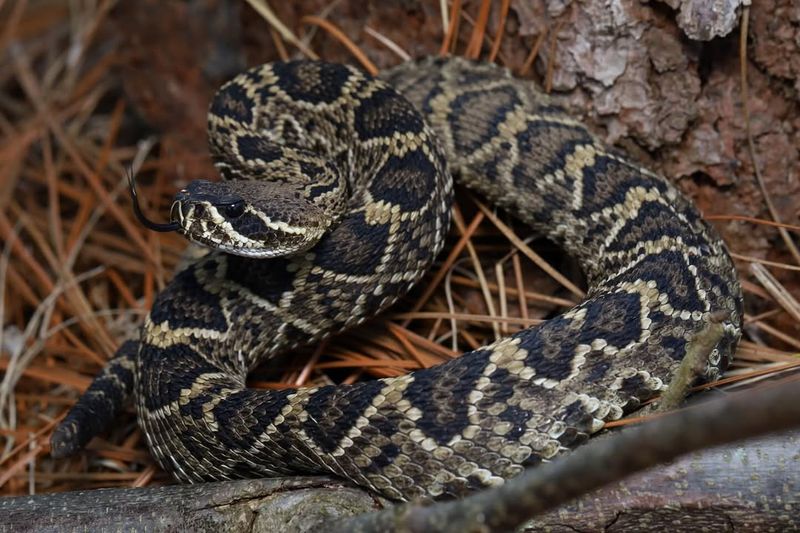
The Eastern Diamondback Rattlesnake is the heavyweight champion of Florida’s snakes. Often found in pine forests and palmetto flatwoods, it flaunts a striking diamond pattern on its back. Though it can reach up to 8 feet long, it’s not the size that counts—it’s the venom. This rattlesnake’s bite packs a punch, potentially fatal if untreated.
Approaching one of these with caution is more than just advice; it’s survival. The snake gives fair warning with its iconic rattle, which sounds like a maraca with a bad attitude. If you hear it, take a step back.
Despite its fearsome reputation, the Eastern Diamondback is a vital part of Florida’s ecosystem, controlling rodent populations. Observing this snake from a safe distance can be a thrilling experience, but it’s not one to cuddle up with. Remember, admiration doesn’t require close proximity.
2. Cottonmouth (Water Moccasin)
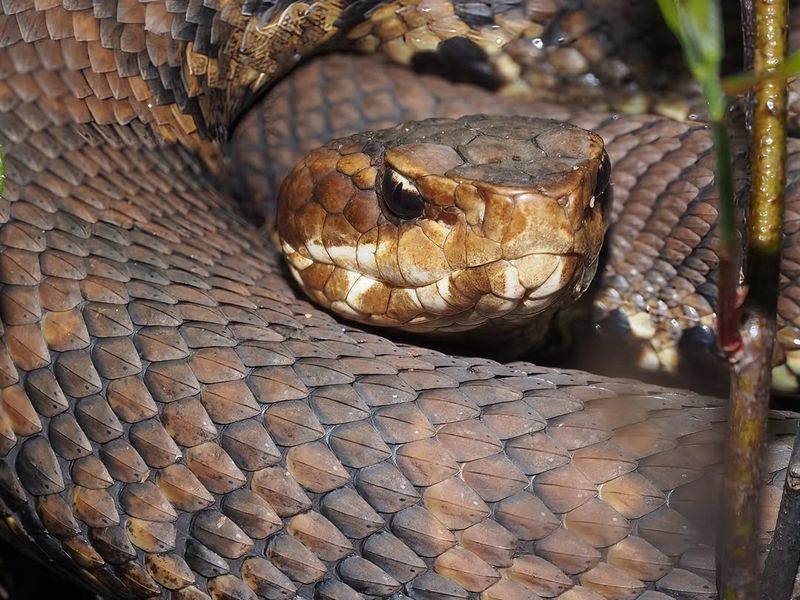
The Cottonmouth, or Water Moccasin, is the swamp’s answer to a crocodile’s grin. This snake is notorious for its aggressive nature and the stark white interior of its mouth, a warning sign it’s not to be trifled with. Often found near water bodies, it’s the aquatic version of ‘look but don’t touch.’
Averaging 3 to 4 feet in length, the Cottonmouth is a master of disguise with its dark, olive-brown coloration blending into the murky surroundings. It can sometimes be mistaken for a harmless water snake, but don’t let its appearance fool you.
In Florida, it reigns supreme in its watery kingdom. If you spot one, appreciate its beauty from afar. Engage in peaceful coexistence by keeping your distance; remember, it’s called a ‘Cottonmouth’ for a reason. Let this be a visual delight rather than a firsthand encounter.
3. Coral Snake
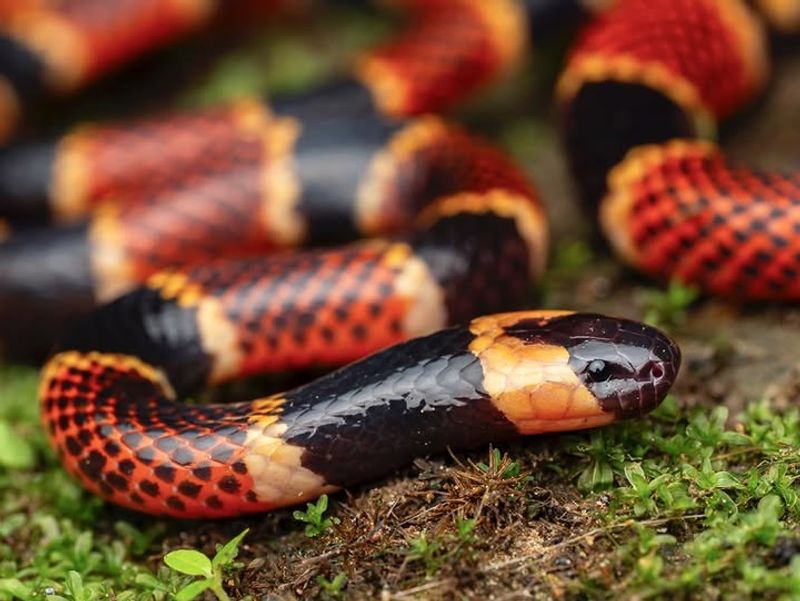
With its mesmerizing color pattern, the Coral Snake could easily be mistaken for a modern art masterpiece. This snake is a living rainbow with its red, yellow, and black bands. Unlike its more aggressive counterparts, the Coral Snake is reclusive, preferring the quiet life under logs and in gardens.
Its bite is highly venomous, but it delivers venom through a chewing action rather than the swift strike of other snakes. In Florida’s snake hierarchy, the Coral Snake is the artist, not the warrior.
If you confuse it with a non-venomous mimic, remember the rhyme: “Red touch yellow, end a fellow; red touch black, friend of Jack.” This snake is a reminder of nature’s palette and its venomous potential. Admire it from afar and let it continue its artistic journey through life.
4. Timber Rattlesnake
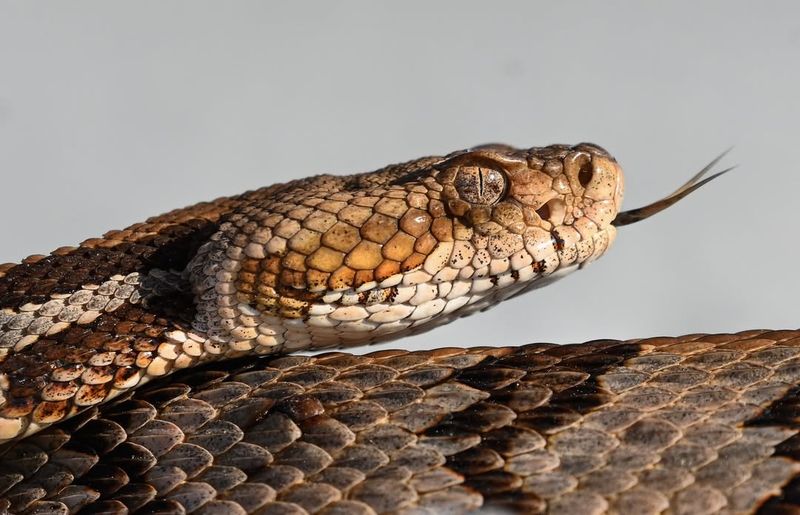
The Timber Rattlesnake is like a rock star on tour, captivating audiences across the Eastern United States. In Florida, it prefers the mixed woodlands where it can rock out in peace. With its signature rattle and camouflaged pattern, it’s the ultimate blend of stealth and showmanship.
This snake can grow to an impressive 5 feet, thrilling herpetology enthusiasts and casual observers alike. Its venom is potent, but it prefers to save its stage presence for actual threats, not curious onlookers.
Encountering a Timber Rattlesnake is like meeting a celebrity; you’ll want to take a picture but keep a respectful distance. Their role in controlling small mammal populations makes them an essential part of the ecosystem, even if they don’t sign autographs. Enjoy the show from afar, and remember the rattle is its encore performance.
5. Dusky Pygmy Rattlesnake
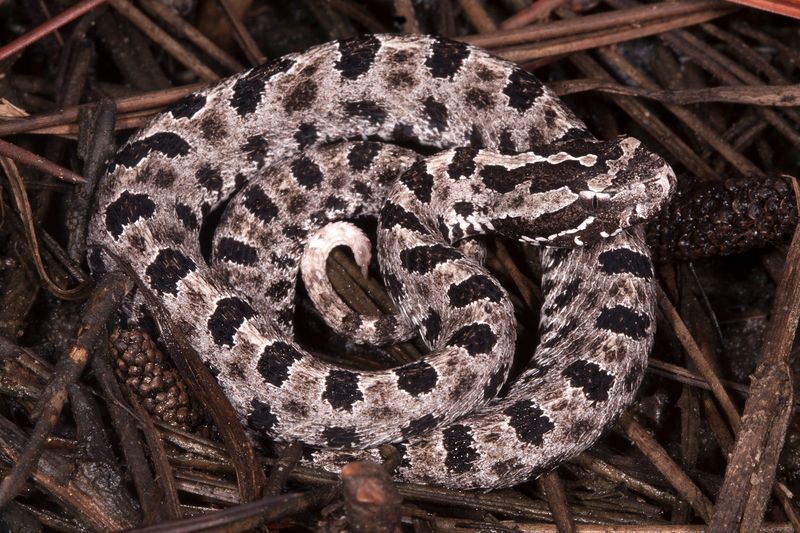
Small but mighty, the Dusky Pygmy Rattlesnake is Florida’s pint-sized predator. Despite its diminutive size, rarely exceeding 2 feet, its attitude more than compensates. This snake is the chihuahua of rattlesnakes—tiny but not to be underestimated.
Its venom may not be as potent as its larger cousins, but it’s enough to inspire caution. The Pygmy Rattlesnake has a distinct pattern of dark blotches on a gray or brown background, providing excellent camouflage in the leaf litter.
A sighting of this snake is a reminder that big surprises can come in small packages. Admire this miniature marvel from a distance, and let it continue its small-scale ecosystem management without interruption. Like the best things in life, it’s better seen than experienced up close.
6. Canebrake Rattlesnake
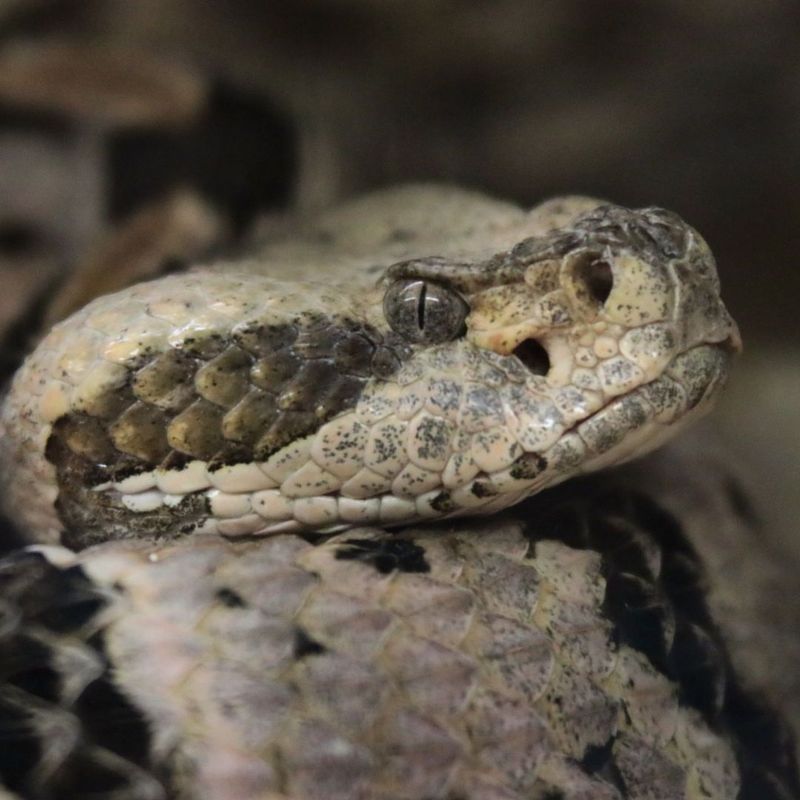
The Canebrake Rattlesnake, also known as the Timber Rattlesnake’s southern cousin, is a heavy hitter in the snake world. Found in Florida’s more rural areas, it’s the country cousin who visits and never leaves. This snake has a knack for blending in with its surroundings, thanks to its chevron pattern.
Reaching lengths of up to 6 feet, it’s a formidable presence. While its venom is highly toxic, the Canebrake Rattlesnake is more about bluffing than biting, saving its energy for genuine threats.
Think of it as the strong, silent type—imposing, yet not overly aggressive. Enjoy observing it from a safe distance, and let it play its part in nature’s intricate dance. This snake proves that sometimes silence speaks louder than venom.
7. Eastern Coral Snake
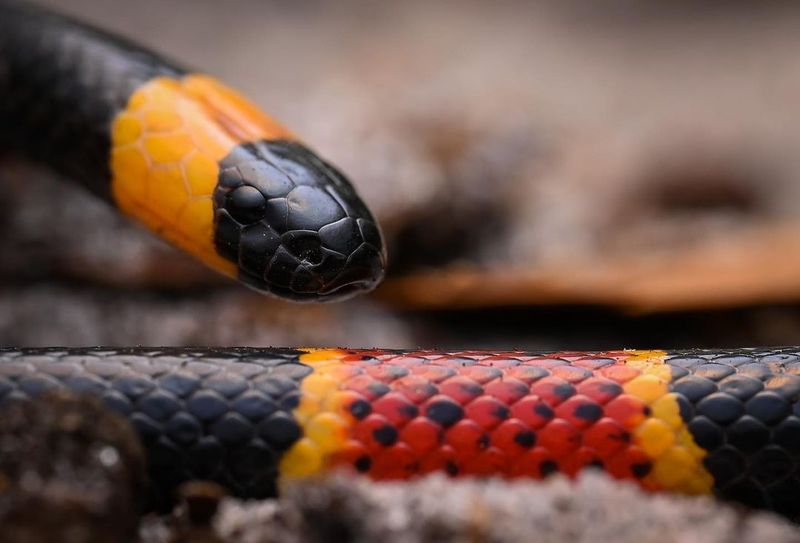
The Eastern Coral Snake is a vivid crawl of color in Florida’s snake lineup. With its striking bands of red, yellow, and black, it’s easy to spot if you know the rhyme: “Red touch yellow, end a fellow.” This snake is more reclusive than others, preferring sandy paths and hidden retreats.
Though its venom is extremely potent, bites to humans are rare thanks to its non-confrontational nature. The Eastern Coral Snake is more of a visual symphony than an aggressive predator.
Spotting one is like finding a hidden gem in the wild; you’ll admire its beauty but know better than to get too close. This snake adds a splash of color to Florida’s wildlife, reminding us that nature’s artistry comes in all forms, some best appreciated from afar.
8. Florida Cottonmouth
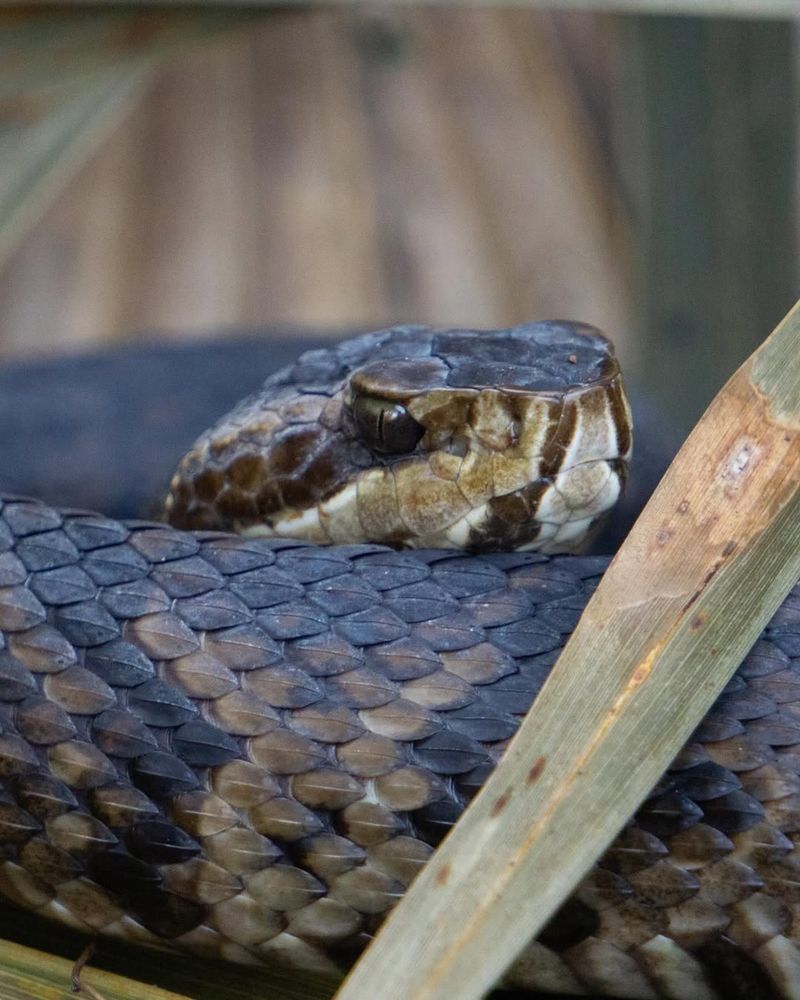
The Florida Cottonmouth is the moody sibling of the snake family, often found lurking in swampy areas with its mouth agape to display the white interior. This defensive posture is its way of saying, “I need space.” Living life on the edge, it’s both a swimmer and a sunbather.
Reaching around 4 feet in length, it’s not the longest snake, but it makes up for it in attitude. Its dark body allows it to blend into murky waters, making it a master of stealth.
Approach a Florida Cottonmouth with the same caution you would a celebrity in a bad mood: look, but don’t engage. It’s all about respecting boundaries. By keeping your distance, you’ll ensure a peaceful encounter with this swamp superstar, allowing it to continue its reign undisturbed.
9. Southern Copperhead
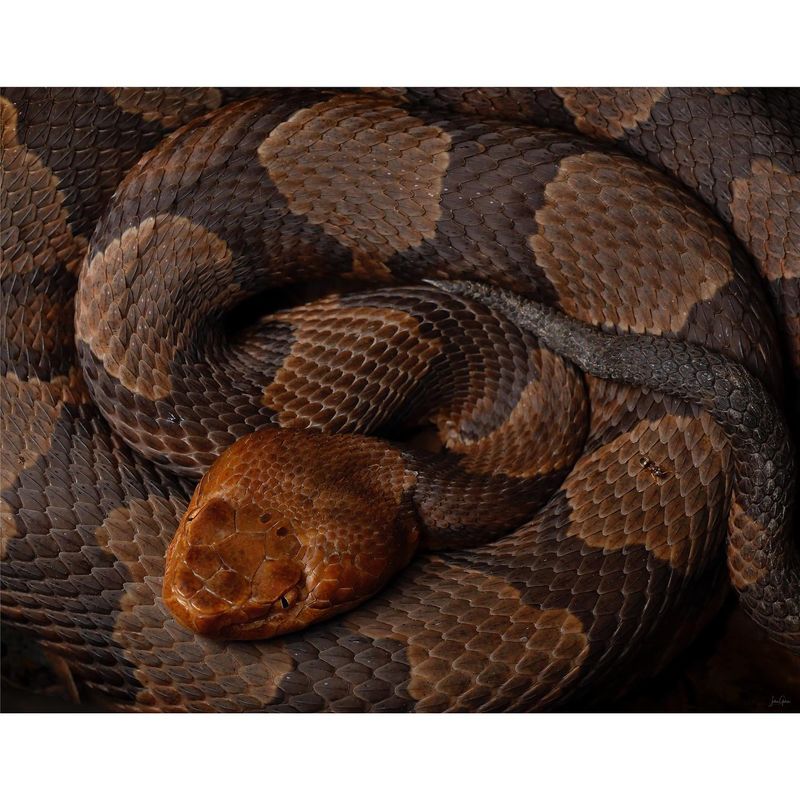
The Southern Copperhead is the wallflower of Florida’s snake scene—beautiful yet inclined to blend in. Its coppery head and banded body allow it to vanish into the leaf litter of woodlands. This snake is more about stealth than stark warnings.
While its bite is painful, it’s rarely fatal to humans. The Southern Copperhead prefers to keep a low profile, striking only when absolutely necessary.
Spotting one is like finding a rare coin on a forest floor; it’s an exciting discovery best enjoyed without touching. Allow this snake to continue its understated role in nature from a respectful distance. Admiration is safer than interaction, and this copper beauty is a sight best seen, not felt.
10. Florida Pine Snake
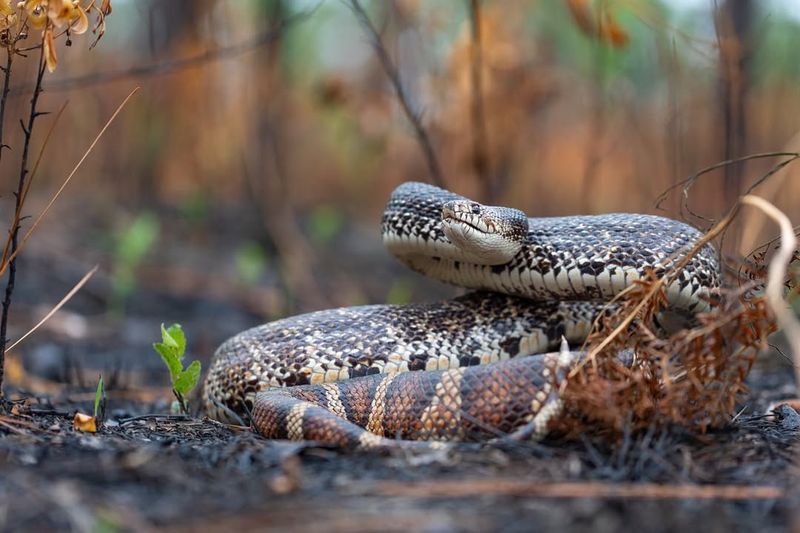
The Florida Pine Snake is a burrowing wonder, often found emerging from its sandy hideaways. It’s the introvert of the snake world, preferring the quiet life underground in pine flatwoods. This snake is more about making an entrance than making a scene.
Though it isn’t venomous, its size can be intimidating, reaching up to 7 feet. Its unique pattern serves as natural camouflage, blending into its environment with ease.
If you encounter this snake, consider it a rare treat. It’s like spotting a unicorn in the world of serpents. Allow the Florida Pine Snake the dignity of distance, and let it burrow back into its peaceful abode. This gentle giant is a reminder that not all Florida snakes are out to get you, some just want to dig in peace.
